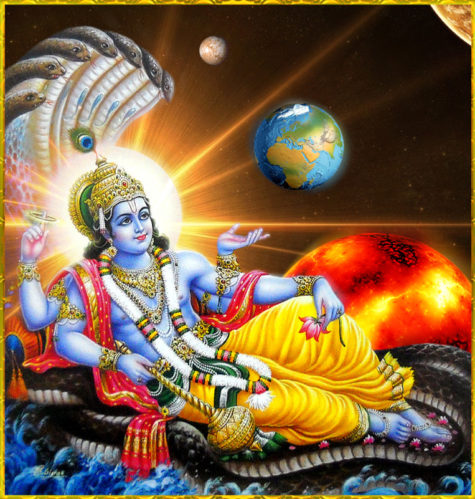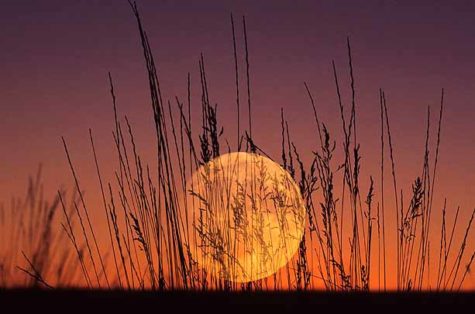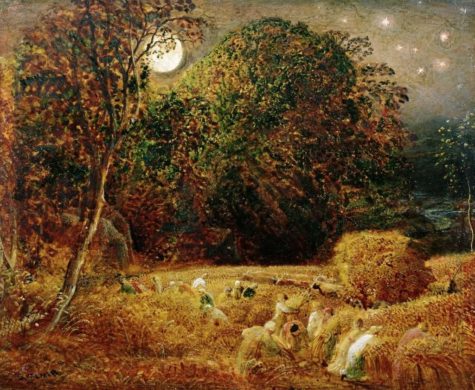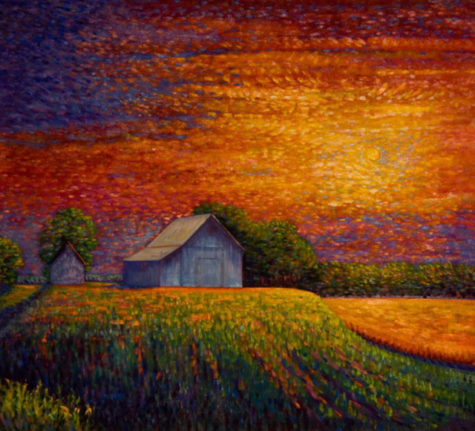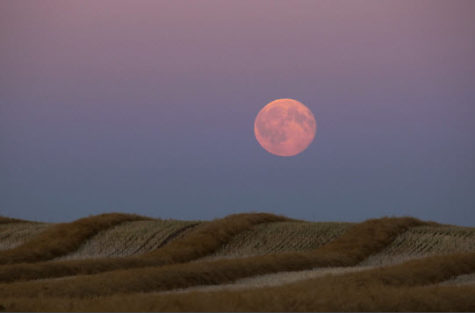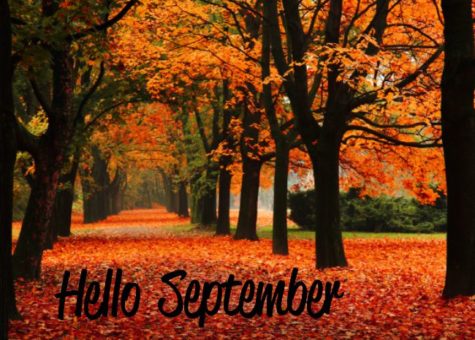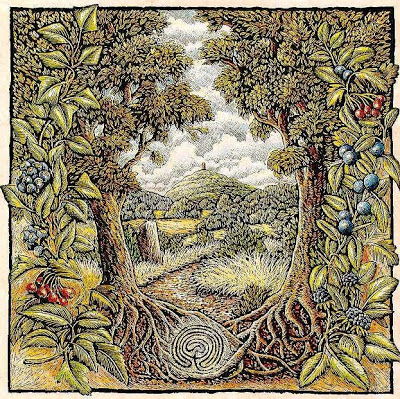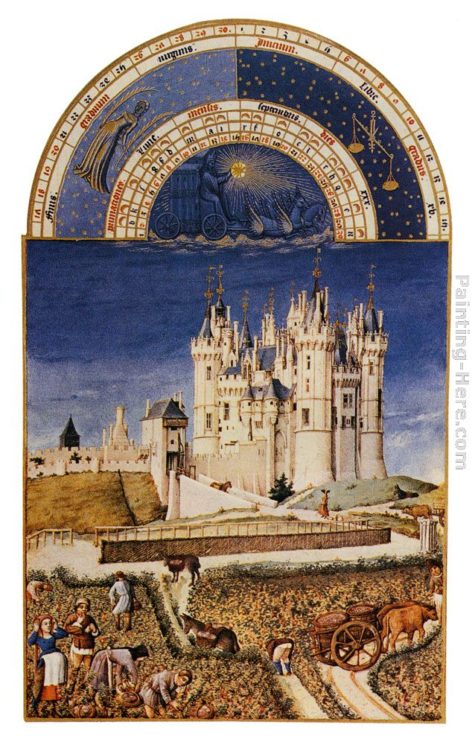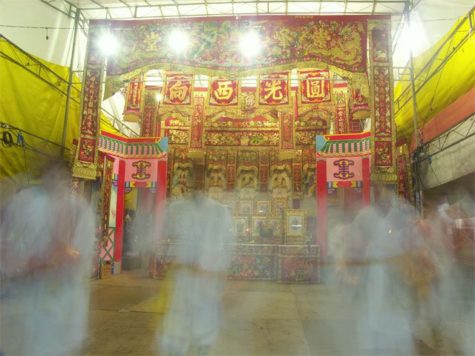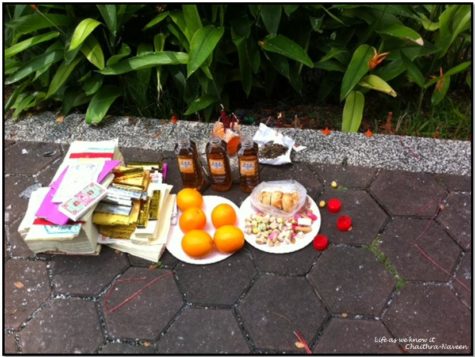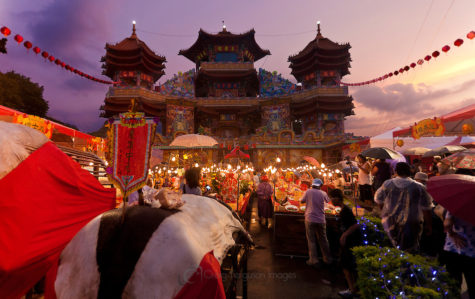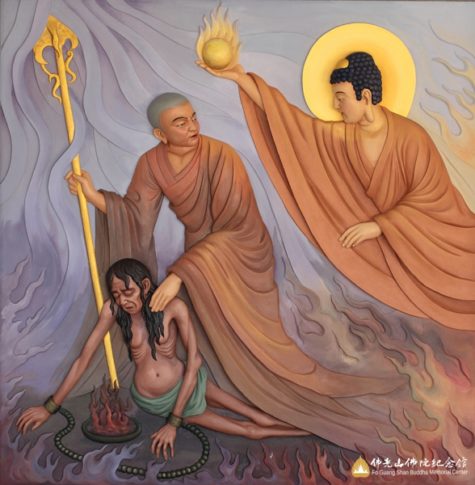Formerly called “I am an American Day” (1940) and then “Citizenship Day” (1952), this observance’s long new name (2004) is called Constitution Day for short. Celebrated on Sept 17 , it marks the anniversary of the date in 1787 when the final draft of the Constitution of the United States was signed by delegates to the Constitutional Convention after months of wrangling.
The framers of the Constitution had been arguing constantly as they met in secret, but they had leaked reports to the press indicating that all was well. “So great is the unanimity, we hear, that prevails in the convention, upon all great federal subjects, that it has been proposed to call the room in which they assemble ‘Unanimity Hall.'” The Federalists (as they came to be called) argued through June and most of July and reached an agreement on July 16.
After deciding to leave out a bill of rights — because everyone was worn-out and they thought there was no need for such a list — the framers completed the final draft on September 17 and made it ready for submission to the states for ratification.
The American Bar Association and other organizations make an effort to mark this anniversary by sponsoring symposia and, in some cases, offering free legal advice.
From: Almanac.com
By presidential proclamation, Patriot Day is observed in the United States on September 11, or 9/11, in memory of the thousands who lost their lives as a result of the September 11, 2001, terrorist attacks against the United States that involved four hijacked planes. The observance also honors those who came to aid in the aftermath.
Each year on Patriot Day, the U.S. flag is flown at half-staff. Citizens are asked to observe a moment of silence, usually at 8:46 a.m. EDT (when the first hijacked plane struck the World Trade Center in New York City), and are encouraged to devote the day and year to serving their neighbors and communities.
From: Almanac.com
The Anant Chaturdashi involves praying and seeking the favor of Lord Vishnu by worshipping an image or idol of him reclining on the serpent Sheshnaga (a mythical creature).
The festival of Anant Chaturdashi is a festival of purification celebrated by Jain and Hindus. Because this festival falls on the fourteenth day of the waxing moon period, the dates of the festival vary from year to year. In 2018, the Anant Chaturdashi will fall on September 23rd.
There are important items that are required when worshiping Lord Vishnu. These are: flowers, oil lamps, incense sticks, a paste of sandalwood, vermilion and turmeric. Once these items have been availed, the worshipers can then offer milk, fruits and sweets to the eternal Lord Vishnu.
In parts of Bihar and Eastern UP, the festival is closely linked to Ocean of Milk (kshirsagar) and Lord Vishnu’s Anant Roopa. The ritual is as follows:
Fourteen tilaks (small vertical strips) of vermilion are made on a wooden plank. Fourteen puri (fried wheat bread) and fourteen pua (deep fried sweet wheat bread) are placed on these vermilion strips. A bowl containing Panchamrit (made of Milk, Curd, Jaggery, Honey and Ghee) symbolizing kshirsagar (Ocean of Milk) is placed on this wooden plank.
A thread having fourteen knots, symbolizing Lord Anant is wrapped on a cucumber and is swirled five times in this “Ocean of Milk”. Later this Anant thread is tied on the right arm above the elbow by men. Women tie this on their left arm.
Anant’s Vow
A thread colored with turmeric and kumkum, knotted in 14 different places and considered sacred by Hindus/Jains is worn on the right and left wrists of men and women respectively. This Anant thread is removed after fourteen days. It is a visible sign of the vow that is being made on this day, and the following words are chanted by the worshipers while wearing this thread known as Anant Sutra:
“Ananta Sansar Maha Samudre Magnan Samabhyuddhar Vasudeva Ananta Rupey Viniyojitatmamahya Ananta Rupey Namoh Namastute.”
The women of the family fast on this auspicious day while the men make a vow. This vow is to be kept for 14 years, in the hope of gaining wealth, protection and knowledge from Vishnu. Some men also make this vow so as to regain lost wealth.
Worshipers and devotees of the festival wake up at dawn, take a bath and engage in the puja after which they can partake of the milk and fruits. The only caveat is that they have to avoid taking salt during this period.
Lord Ganesha Departs
One may note that Chaturthi is the fourth day of the lunar fortnight, while Chaturdashi is the fourteenth. In the normal course, Anant Chaturdashi falls 12 days after Ganesh Chaturthi.
Anant Chaturdashi is also the last day of the Hindu festival of Ganeshotsav. It is generally the tenth or eleventh day after Ganesh Chaturthi, and all the Ganesh idols brought into homes and communities are immersed in the sea or nearby lakes and rivers.
On this day, people travel to the waterfront with the idols, large and small, dancing and singing in large processions. Lord Ganesha is departed, only to be welcomed the next year with equal excitement.
The story behind this festival:
There was a Brahmin named Sumant. From his wife Diksha he had a daughter named Sushila. After the death of Diksha Sumant married Karkash, who began to give a lot of trouble to Sushila. Sushila married Kaundinya, and both decided to leave the house to avoid the harassment of the step-mother. On the way they stopped near a river.
Kaundinya went to take bath, and Sushila joined a group of women who were performing worship. They told Sushila that they were worshipping “Anant”. “What kind of worship is this?” Sushila asked. “Anant’s Vow”
They told her that it was Anant’s vow. Then they explained to her the importance of that vow. Some fried “Gharga” (made of flour) and “anarase” (special food) are prepared. Half of them have to be given to the Brahmins. A hooded snake (cobra) made of “darbha” (sacred grass) is put in a bamboo basket. Then the snake (“shesh”) is worshipped with scented flowers, oil lamp and incense sticks. Food is offered to the snake and a silk string is kept before the god, and tied to the wrist. This string is called “anant”, it has 14 knots, and is coloured with “Kunkum”. Women tie the “anant” on their left hand and men on their right. The purpose of this vow is to obtain divinity and wealth, and is kept for 14 years.
After listening to this explanation Sushila decided to take the Anant vow. From that day she and her husband Kaundinya began to prosper and became very rich.
One day Kaundinya, noticed the Anant string on Sushila’s left hand. When he heard the story of the Anant vow, he was displeased and maintained that they had become rich, not because of any power of Anant, but because of the wisdom he had acquired by his own efforts. A heated argument followed, and at the end Kaundinya took the Anant string from Sushila’s hand and threw it into the fire.
After this all sorts of calamities happened in their life, and finally they were reduced to extreme poverty. Kaundinya understood that it was the punishment for having dishonoured “Anant”, and decided that he would undergo rigorous penance until God Himself appeared to him.
Kaundinya went into the forest. There he saw a tree full of mangoes, but no one was eating the mangoes. The entire tree was attacked by worms. He asked the tree if he had seen Anant, but got a negative reply. Then Kaundinya saw a cow with her calf, then a bull standing on a field of grass without eating the grass. Then he saw two big lakes joined to each other with their waters mixing with one another. Further he saw a donkey and an elephant. To every one Kaundinya asked about Anant, but no one had even heard this name. Then he became desperate and prepared a rope to hang himself.
Then suddenly an old venerable Brahmin appeared before him. He removed the rope from Kaundinya’s neck and led him into a cave. At first it was very dark. But then a bright light appeared and they reached a big palace. A great assembly of men and women had gathered. The old Brahmin went straight towards the throne.
Then Kaundinya could no longer see the Brahmin, but only Vishnu instead. Kaundinya realized that Vishnu himself had come to save him, and that Vishnu was Anant, the Eternal One. He confessed his sin in failing to recognize the Eternal in the string on Sushila’s hand. Anant promised Kaundinya that if he made the 14-year-vow, he would be free from all his sins, and would obtain wealth, children and happiness.
Anant explained that the mango tree was a Brahmin, who in a previous life had acquired plenty of knowledge, but had not communicated it to anyone. The cow was the earth, which at the beginning had eaten all the seeds of plants. The bull was religion itself. Now he was standing on a field of green grass. The two Lakes were two sisters who loved each other very much, but all their alms were spent on each other only. The donkey was cruelty and anger. Finally the elephant Kaundinya’s pride.
From: Wikipedia and World Religion News
The Full Moon in September is all about emotions, healing, and balancing. This is a time of organizing and preparing for the coming months.
“This powerful Gateway is an opportunity to greatly accelerate your spiritual growth and to promote Balance in your life. Divine Masculine supports the Divine Feminine. As they come together in Sacred Marriage, you realize that one without the other is not balanced. So, do not act unless it is aligned with your Integrity; your Heart. Be inspired and then take a step toward your dream.”
– Ascension: Soulstice Rising
The Farmer’s Almanac tells us that this full moon’s name is the Full Corn Moon, attributed to Native Americans because it marked when corn was supposed to be harvested, however some calendars attribute the Corn Moon to the month of August. Most often, the September full moon is actually the Harvest Moon, which is the full Moon that occurs closest to the autumn equinox.
In two years out of three, the Harvest Moon comes in September, but in some years it occurs in October. At the peak of harvest, farmers can work late into the night by the light of this Moon. Usually the full moon rises an average of 50 minutes later each night, but for the few nights around the Harvest Moon, the Moon seems to rise at nearly the same time each night: just 25 to 30 minutes later across the U.S., and only 10 to 20 minutes later for much of Canada and Europe.
Corn, pumpkins, squash, beans, and wild rice, the chief garden and native staples, are now ready for gathering.
The September Moon is also known as Harvest Moon, Barley Moon. The harvesters would gain extra time in the fields by the light of the harvest moon.
Please take a seat and clear your mind of what fills it now and hear my words:
As you are sitting, close your eyes and feel the yellow of the sun..Reach up with your arms and let your fingertips touch that yellow..Now, lay back, with your arms extended and become a ray of the sun..As we all lay in a circle, we form the sun – we are all rays of this vivid starburst.
Look down to the Earth and see the fields ripe with the summer’s abundance..Find your self in the center of this abundance holding a large willow basket, eager to begin your autumn harvest.
Step first into an expanse of sweet corn..See the erect, regal, green stalks of corn..Observe a ripe ear on a particular stalk which extends to you..Under its scruffy whiskers kernels that sparkle like gold shine through. You are reminded of your own riches – both tangible and intangible..Reach out and pick this ear and put it into your basket.
Leave the corn field and enter an orchard; an apple orchard..See the beauty of these trees, these majestic symbols of the Goddess..Feel the fullness of her boughs – full of ruby red apples of knowledge..Reach up, way up, and pick two. Put one in your basket and eat the other. Taste and enjoy this fruit – for in this garden tasting an apple is not forbidden.
Now move toward an onion field which beckons you..Once green, now browning spikes point up to you, tempting you to dig below…Pull gently and the ground gives birth to aniridescent, opal bulb, full of body and character and strength..A vegetable with the power to make you feel the power of tears..Add this to your growing harvest.
Notice ahead thick bushes of ripened raspberries..Sharp brambles protecting their precious, succulent garnets..The sweet nectar of these berries remind you of your own sensuality – your own ability to feel, express, extend all that is soft and loving and warm to others..Take your time here and pick plenty of these supple jewels for your basket.
Step away now and look around you..Find a patch of fruit or vegetables that appeals to you..Enter it, admire its offerings, select a precious gem of your own to harvest..Choose a resource to sustain you in the rapidly upcoming time of cold and darkness…Capture some warmth and light and savor its presence.
With your arms now laden with this basket of bountiful treasures, it is time now to rest..Take your harvest to the grassy knoll in the sun just beyond and sit and bask in the glory of its healing heat..Rest in contentment knowing you have collected that which you need to give you strength and nourishment in the winter days to come.
Put yourself back in the sky now..Become the sun once again..Shine down upon yourself and your gatherings..Absorb the energy of the fruits of your labors, bless these seeds you planted in the Spring and nurtured to fruition through the summer..Be the sun..Shine down upon all that is good and good-giving..Give the light of hope to all you shine upon.
When everything you have touched with your rays is full of your brightness, open your eyes and rejoin our circle.
Sources:
- Journeying To The Goddess
- Magickal Winds
- Meditation by ~Angelica
The September full Moon is usually known as the Full Corn Moon because it traditionally corresponds with the time of harvesting corn. It is also called the Barley Moon because this is the time to harvest and thresh ripened barley.
Often, the September Moon is also called the Harvest Moon, but this year the Harvest Moon occurs in October. The Harvest Moon is the Moon that falls nearest the autumnal equinox; this full Moon provides the most light at the time when it’s needed most—to complete the harvest!
Source: Almanac.com
What follows is a list (in alphabetical order) of the names given to the September moon. Also listed is the tradition and/or origin of that moon name:
Acorns Moon ~Wishram
Autumn Moon ~Passamaquoddy
Barley Moon ~Mediaeval English, Algonquin
Black Butterfly Moon ~Cherokee
Black Calf Moon ~Sioux
Blood Moon ~other
Calves Hair Growth Moon ~Dakota
Corn Moon ~Algonquin, Pueblo
Corn Maker Moon ~Abernaki
Deer Paw Moon ~Omaha
Drying Grass Moon ~Arapaho, Cheyenne, Sioux, Algonquin
Freshness Moon ~Mohawk
Fruit Moon ~Algonquin
Harvest Moon ~Neo-Pagan, Colonial American, Algonquin, Hopi
Hay Cutting Moon ~Yuchi
Leaf Fall Moon ~Kiowa
Little Chestnut Moon ~Creek
Maize Moon ~Natchez
Mulberry Moon ~Choctaw
Nut Moon ~Cherokee
Rice Moon ~Anishnaabe
Ripe Moon ~San Juan
Scarlet Plum Moon ~Sioux
Singing Moon ~Celtic
Snow Goose Moon ~Cree
Soaproot ~Pomo
Sturgeon Moon ~other
Yellow Leaf Moon ~Assiniboine, Taos
Wine Moon ~other
Collected from various sources
September gets its name from the Latin word septum, meaning “seven,” because it was originally the seventh month in the old calendar system. The Anglo-Saxons called it Gerst monath (Barley month), because it was their time to harvest barley to be made into their favorite drink – barley brew. They also called it Haefest monath or Harvest month.
While the early portion of this month has many summery-feeling festivals, slowly we see a change in focus toward the fall and harvest celebrations. Children return to school, outdoor activities start to wane, and the Wheel of Time begins to paint the trees with color.
September’s energy augments magic for prosperity and abundance, balanced with sensibility and a little frugality. It is especially a time for rituals that thank the goddess for all her gifts throughout the year. Beyond this, start making amulets for health so that when the cooler winds come, you’ll be magically fortified.
According to the lore, September is a great month in which to marry:
- Marry in September’s shrine, your living will be rich and fine.
- Married in September’s golden glow, Smooth and serene your life will go.
- A September bride will be discreet, affable, And much liked.
September Correspondences
- Nature Spirits: Trooping faeries
- Herbs: Copal, Fennel, Rye, Wheat, Valerian, Skullcap
- Colors: Brown, Yellow-Green, Yellow
- Flowers: Narcissus, Lily, Aster
- Scents: Storax, Mastic, Gardenia, Bergamot
- Gem: Sapphire
- Stones: Peridot, Olivine, Chrysolite, Citrine
- Trees: Hazel, Larch, Bay
- Animals: Snake, Jackal
- Birds: Ibis, Sparrow
- Deities: Demeter, Ceres, Isis, Nephthys, Freyja, Ch’ang-O, Thoth
- Full Moon: Harvest Moon
- Autumn Equinox: Nature comes into balance
Power flow:
Rest after labor; Balance of Light and Dark. Organize. Clean and straighten up physical, mental, emotional, and spiritual clutter.
September Weather Lore
- Fair on September 1st, fair for the month.
- Heavy September rains bring drought.
- If on September 19th there is a storm from the south, a mild winter may be expected.
- If St. Michael’s (Sept 29) brings many acorns, Christmas will cover the fields with snow.
September Festivities
The Autumn Equinox was and is celebrated still by many cultures around the world. This month is the last of the reliable harvesting months in the Northern Hemisphere. Life is beginning to wind down in preparation for the dormant months that follow. The energy flows from the Autumn Equinox through Winter Solstice to the Spring Equinox are gentler, deeper, more hidden. The Dark Moon deities, who represent the Underworld, death, reincarnation, and deep spiritual mysteries, now hold sway.
The Egyptian Ceremony of Lighting the Fire was a general festival of lights for all the gods and goddesses. Lamps of all kinds were set in front of deity statues. They were also placed before the statues of ancestors.
The Egyptian deity Thoth was the Lord of Holy Words and inventor of the Four Laws of Magick. Portrayed as ibis-headed, Thoth was a Moon god. As Supreme Magus, or the Ultimate Magician, he had control over the powers and attributes of the Moon.
In the old Incan Empire, the Citua was held on the New Moon nearest the Autumn Equinox. Everyone performed a ritual cleansing, then smeared their faces with a paste of ground maize. There followed several days of feasting and dancing. This was a moon festival in honor of Mama Quilla, the Moon goddess.
Gauri, or the Fair One, is not a well known goddess of India. She is considered to be an aspect of the goddess Durga. Gauri is honored by eating sweets made from honey to bring sweetness to the soul.
The most famous holy celebration of this time of year was the annual Greek festival called the Greater Eleusinia. It honored Demeter, Kore-Persephone, and the holy child Iacchus. Unlike the Lesser Eleusinia held in the Spring, this celebration was open only to initiates who were under strict rule of silence about what occured.
The Greek goddess Themis was the Titaness daughter of Uranus and Gaea. She was the mother of Atlas and Prometheus and the mother by Zeus of the Horae and the Moerae (Furies). Since she was the deity of social order and collective consciousness, the Olympians held her in high respect. Holding a pair of scales, Themis protected the innocent and punished the guilty. She ruled Delphi after her mother Gaea, but relinquished it to Phoebe who gave it to Apollo.
The annual festival of Yue-ping was held in China from the New Moon to the Full Moon. People made round cakes and painted figures of women or a hare and trees on them. These were called Yue-ping, or “Moon cakes.” These cakes were presented to relatives and friends.
The Chinese said that the Moon Mother had twenty-eight “houses) (Hsiu) and rested each night in a different one. In each “house” she kept a warrior-hero consort who kept her company and did her bidding.
Sources: 365 Goddess and Moon Magic
- Themes: Work; Rest; Recreation; Prosperity
- Symbols: All the Tools of Your Trade
- Presiding Deity: Ka-blet-jew-lei-hat
About Ka-blet-jew-lei-ha: The Assam goddess of the marketplace and merchants takes a much deserved rest from her labors today and focuses on rewarding tasks that have been well done throughout the last eight months.
To do today:
For most folks in the United States, Labor Day (celebrated the first Monday in September) represents a long weekend without normal workaday activities. From a magical perspective, this holiday offers us a chance to thank Ka-blei-jew-lei-ha for our jobs (which keep a roof overhead and food on the table) and ask for her blessing on the tools we use regularly. For example:
- A secretary might empower his or her pen and steno pad.
- A musician can charge his or her instrument.
- A shopkeeper might anoint the cash register.
- A book dealer might burn specially chosen incense near goddess-centered books (and in the business section).
Some potential herbal tinctures and oils to use for inspiring Ka-blei-jew-lei-ha’s prosperity and watchfulness include cinnamon, clove, ginger, mint, orange, and pine. To partake of the goddess’s abundance by energizing your skills with her magic, blend all of these (except pine) into a tea. To bless your home or your workplace blend the above oils with water and wash the front steps with it.
The goddess can help with job searches too. Just tell her your need then review the newspaper and see what companies catch your eye. Then get on the phone or get the resume out so Ka-blei-jew-let-hat can open that doorway.
Source: 365 Goddess
Note: The only reference to this goddess that I could find was the one in the book 365 Goddess. More commonly, Oya and Ayizan are the goddesses associated with the marketplace.
The seventh lunar month in the traditional Chinese calendar is called Ghost Month. These dates vary from year to year, in 2017, Ghost Month runs from August 28 to September 19, and the Ghost Festival is on Sept 5.
On the first day of the month, the Gates of Hell are sprung open to allow ghosts and spirits access to the world of the living. The spirits spend the month visiting their families, feasting and and looking for victims.
There are many taboos in the Ghost Month. For example, do not wear the clothes with your name, do not pat other people on the shoulder, do not whistle, children and senior citizens should not go out at night.
There are three important days during Ghost Month. On the first day of the month, ancestors are honored with offerings of food, incense, and ghost money – paper money which is burned so the spirits can use it. These offerings are done at makeshift altars set up on sidewalks outside the house.
Almost as important as honoring your ancestors, offerings to ghosts without families must be made, so that they will not cause you any harm. Ghost month is the most dangerous time of the year, and malevolent spirits are on the look out to capture souls.
This makes ghost month a bad time to do activities such as evening strolls, traveling, moving house, or starting a new business. Many people avoid swimming during ghost month, since there are many spirits in the water which can try to drown you.
The 15th day of the month is Ghost Festival, sometimes called Hungry Ghost Festival. The Mandarin name of this festival is zhōng yuán jié (中元節 / 中元节). This is the day when the spirits are in high gear. It’s important to give them a sumptuous feast, to please them and to bring luck to the family. Taoists and Buddhists perform ceremonies on this day to ease the sufferings of the deceased.
The last day of the month is when the Gates of Hell are closed up again. The chants of Taoist priests inform the spirits that it’s time to return, and as they are confined once again to the underworld, they let out an unearthly wail of lament.
The story:
The idea of a feast for the ghosts comes from a story of Buddhism. Moggallana was one of Buddha Shakyamuni’s best students. He had various supernormal powers and owned the divine eyes. One day, he saw his deceased mother had been born among hungry ghosts.
He went down the Hell, filled a bowl with food to provide for his mother. Before reaching his mother’s month, the food turned into burning coals which couldn’t be eaten. Moggallana cried sorrowfully and asked for help from Buddha.
Buddha said the sins of his mother were deep and firmly rooted, and couldn’t be forgiven just using the divine power. It would require the combined power of thousand monks to get rid of her sins. Buddha told Moggallana:
“the 15th day of the 7th lunar month is the Pavarana Day for the assembled monks of all directions. You should prepare an offering of clean basins full of hundreds of flavors and the five fruits, and other offerings of incense, oil, lamp, candle… to the greatly virtuous assembled monks. Your present parents and parents of seven generations will escape from sufferings.”
Following Buddha’s instructions, Moggallana’s mother obtained liberation from sufferings as a hungry ghost by receiving the power of the merit and virtue form the awesome spiritual power of assembled monks on 15th day of the 7th lunar month.
Today, similar rituals are held in the Buddhism temples on this day for the deliverance of all suffering spirits.
Found at: Mandarin.About.Com and other sources
Formerly known as Woman Suffrage Day, August 26 marks the ratification of the 19th Amendment to the U.S. Constitution (1920), granting women the right to vote. Ratification came in Tennessee, where suffragist (Anitia) Lili Pollitzer, age 25, persuaded Tennessee state legislator Harry T. Burn, age 24, to cast the deciding vote.
“I know that a mother’s advice is always safest for a boy to follow,” he said, “and my mother wanted me to vote for ratification.”
The country’s 26 million voting-age women were enfranchised by this change in the Constitution. Longtime suffragist Carrie Chapman Catt summed up her experiences in the battle this way: “Never in the history of politics has there been such a nefarious lobby as labored to block the ratification.”
Upon ratification, Catt founded the League of Women Voters, an organization now dedicated to providing impartial, in-depth information about candidates, platforms, and ballot issues.
From: Almanac.com












